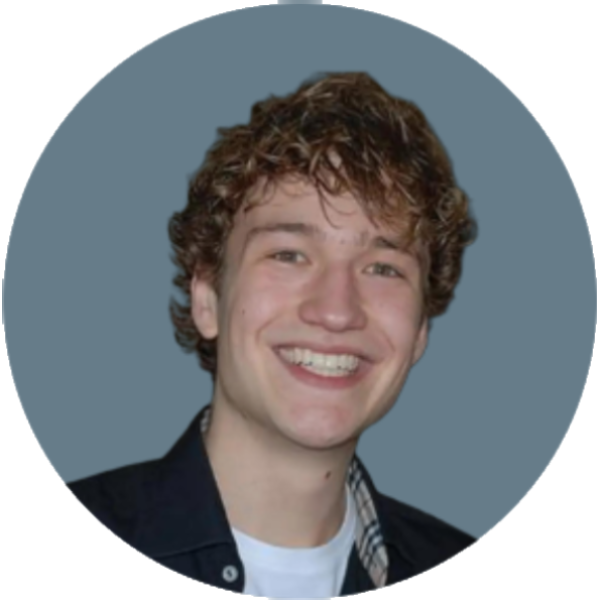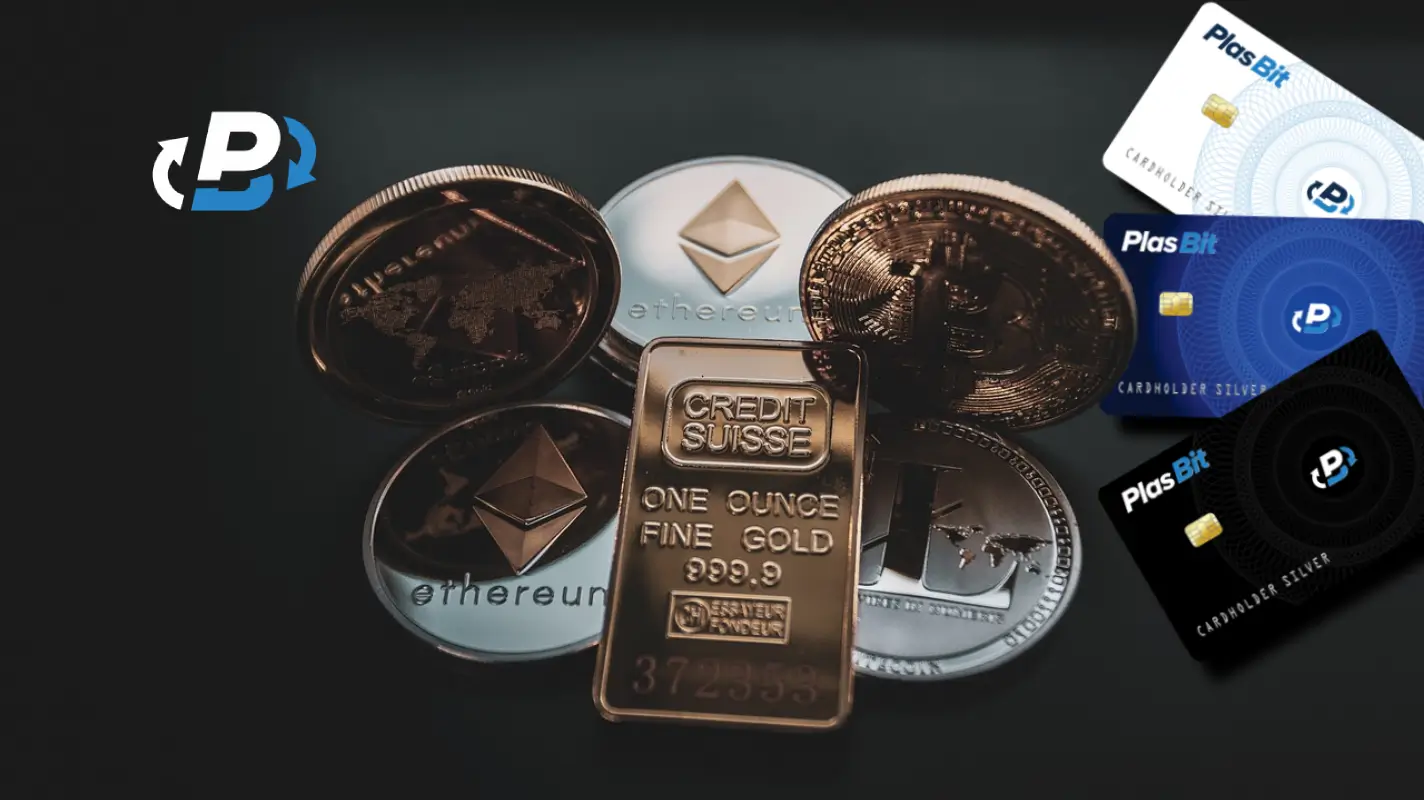If you are looking for a way to spend your crypto in your everyday life, a crypto card lets you load crypto from your wallet and pay at every place a regular Visa card is accepted, both online and in physical stores, flights, restaurants, car dealerships, groceries, clothes, these can all be paid for using crypto, without the vendor even handling the exchangefrom crypto to Fiatat the point of sale. We offer prepaid cards, virtual debit cards, plastic cards, and metal cards, and each one has its advantages and suitable use. We have prepared a step-by-step guide on how to deposit crypto to your Plasbit wallet, purchase a plastic crypto debit card, and load it with crypto from your wallet.
How to get a Crypto Card
Ordering a PlasBit physical crypto card is a very easy process that shouldn't take more than 15 minutes of your precious time. All you need to do is to follow these simple steps:
- Log in to your existing PlasBit account and navigate to its Dashboard.

2. Go to the Wallet section and Deposit Bitcoin.
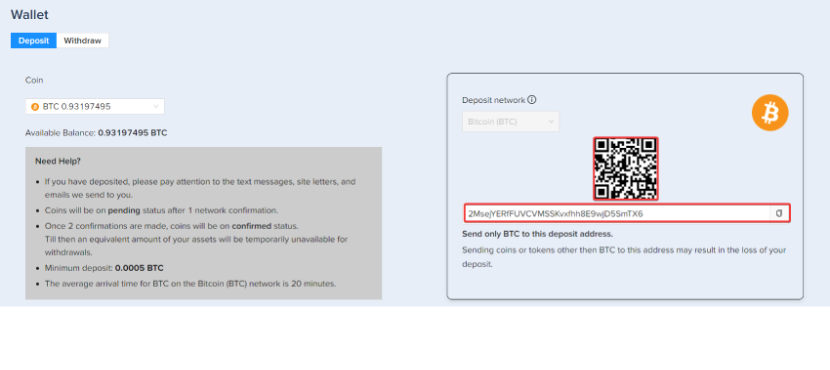
3. Head Over To The Card Section, select the crypto card of your choice and click "Get This Card"
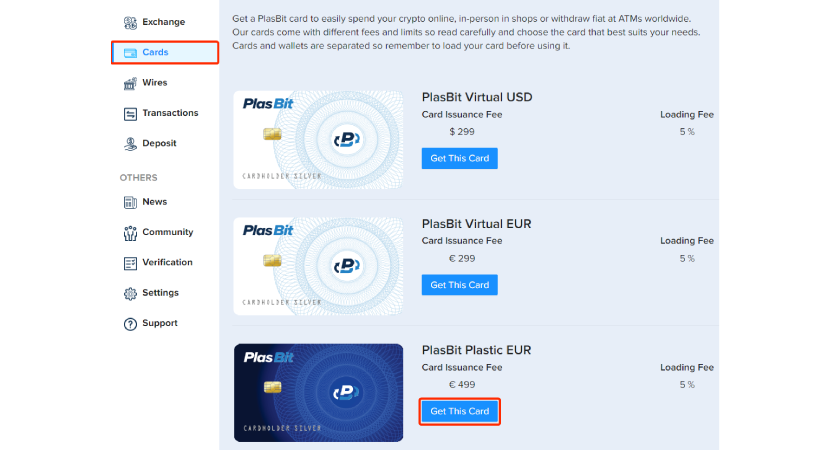
4. Fill in your Personal Details.
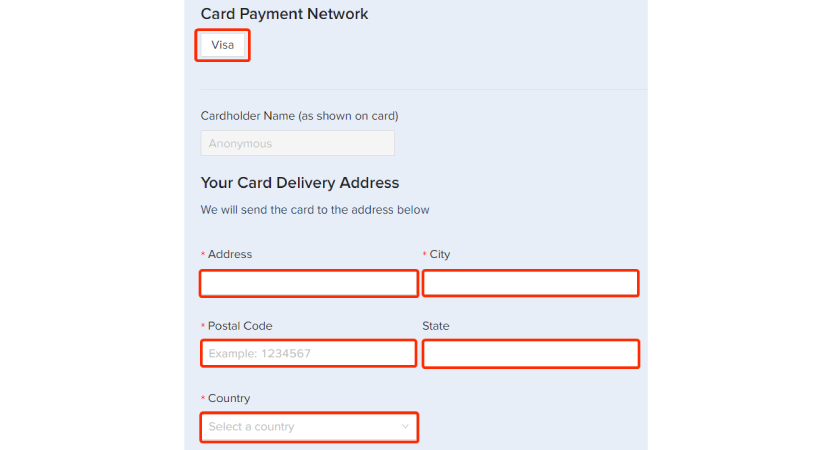
5. Select your preferred delivery method and select Bitcoin wallet as the payment wallet and click "Submit"
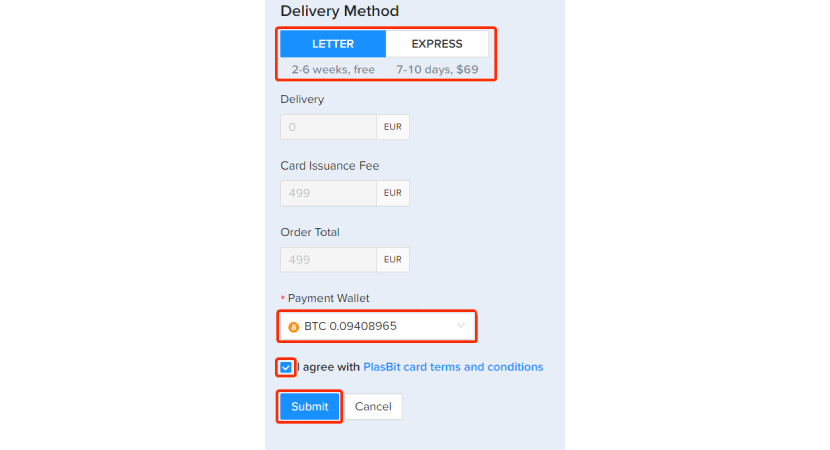
6. Ensure you entered all your details correctly, and confirm your order by clicking Submit.

7. Wait for our team to confirm the card order. You will be notified by email about the current status of your order.
Note that the delivery time depends on the method you choose. Standard delivery takes between 2 and 6 weeks, whilst express delivery takes between 7 to 10 days.
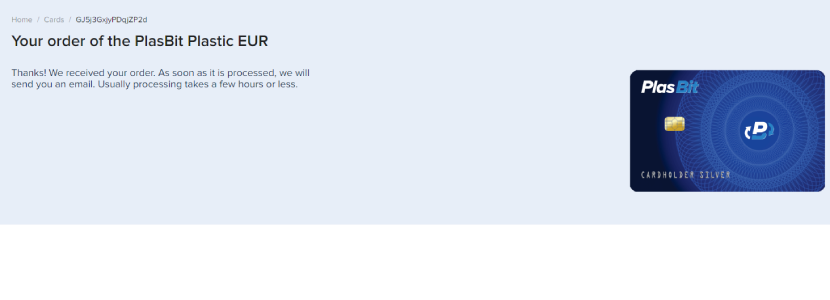
8. Load Funds Onto The Card
Once you have received your crypto card, go to the ‘’Cards’’ section and click on the ‘’Open Details’’ button.
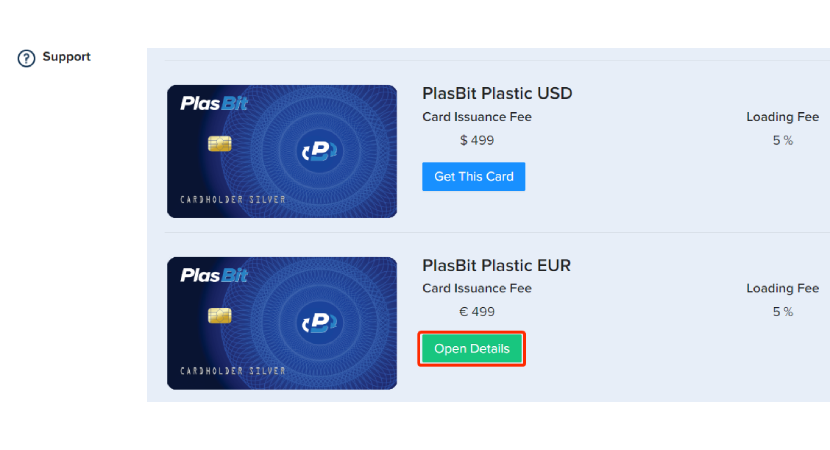
9. Navigate to the Funding tab and choose the wallet you want to use for loading your card and press the Load button.
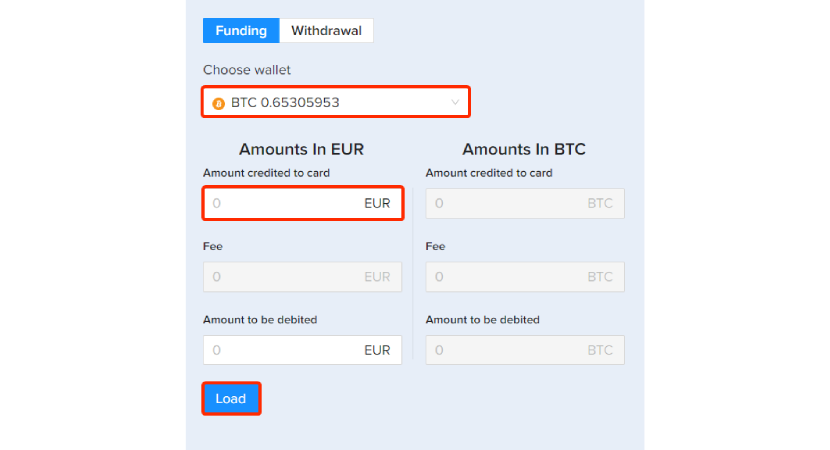
10. Click ‘’Submit’’ once you have verified the amount is correct.
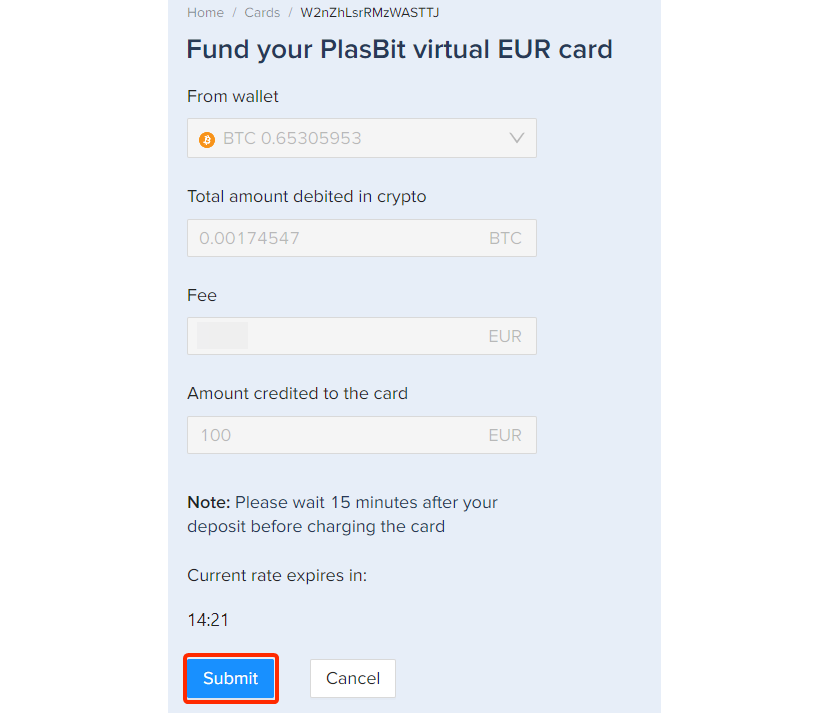
11. Whenever you wish to view your PlasBit Card details, you can simply do this by pressing the ‘’View Card Details’’ button you will see the card number, expiry date, and CVV.
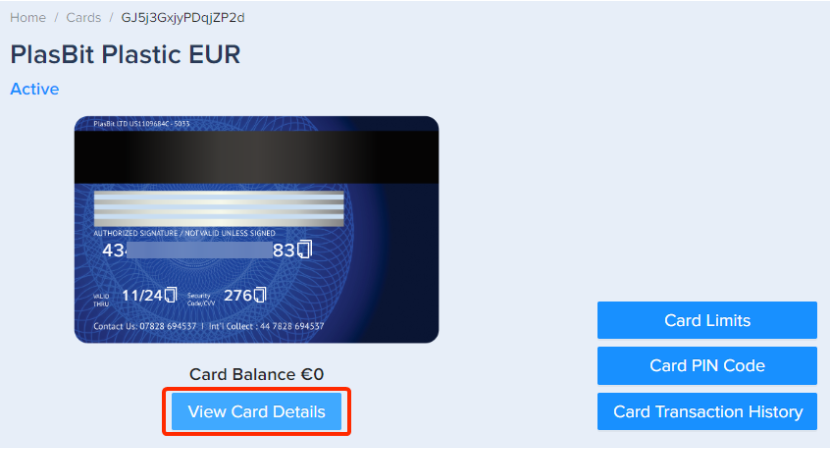
Obviously, you can use your card to shop online and in physical stores. In fact, the card will work anywhere in the world where they take Visa as the PlasBit card is Visa-branded. You can compare our current rates and limits on our cards page.
What Type of Cards do we Offer?
We offer four types of crypto cards: prepaid, virtual, plastic, and metal. They each have varying fees, terms, limits, and issuance costs.
Prepaid cards are one-time, disposable USD-denominated virtual cards that allow you to safely use a predetermined amount of funds, limiting your expenses and reducing the risks of fraud and accidental overspending. They come in amounts that vary from $20 to $1,000, and they can also be connected to Apple and Google Pay, allowing you to pay in physical stores in addition to online vendors.
Virtual cards enable you to spend your crypto at online stores, booking sites, and other merchants. They do not connect to Apple or Google Pay like prepaid cards, so physical stores won’t accept them, but they are reloadable, unlike most other crypto debit cards.
Plastic and metal cards we offer are both physical cards that you can use to purchase goods and services and make ATM withdrawals, while the metal one offers higher limits and no exchange fees. Naturally, the metal card is of superior quality compared to the plastic one.
Living Your Life on Crypto
Imagine a person who mined Bitcoin in the early days out of a hobby and found himself having quite some digital funds sitting around. For a long while, he could only spend these funds within niche markets and not on his day-to-day life.
When crypto cards were first introduced, he was finally able to conveniently spend the crypto he had accumulated in the same easy way as paying with his regular debit card. However, this time, he is loading his own crypto from his crypto wallet without even needing to make a call to his bank. In essence, he is completely independent and ‘’off the grid.’’
He found himself traveling the world, enjoying renting luxury cards, eating amazing food, and living his life to the fullest, paying vendors who don’t even know he is living on crypto. To the outside world, it looks like he is just like anyone else.
Even after returning home, he was able to go shopping, both online and in retail stores, buy himself a new car, shop for groceries, and pay for rent, all from the crypto he acquired through playing around with Bitcoin in the early days.
A crypto card is a tool that helps you live on crypto in your day-to-day life. You can use it to withdraw funds from ATM machines or spend money in stores that accept VISA debit and credit cards: flights, restaurants, phones, cars, TVs, rent, groceries, and resorts.
A Crypto Card Can Help You Escape the Rat Race
Even if you weren’t into crypto during its early days, as a working freelancer in any profession, you can ask your client to get paid in crypto. This will save you unnecessary fees and hassles of third-party payment solutions.
Once your wallet is filled with the crypto you’ve earned, you need a way to spend it, whether on your living expenses such as rent and groceries or nonessentials. That’s where the card comes in.
Keep in mind that crypto is entirely borderless, and by combining a crypto wallet with a card you gain the freedom to live anywhere without being tied to one location. You can live the digital nomadic dream without banks or other intermediaries getting involved in your money.
Traditional banking can be very costly and inconvenient for a nomad, given the long time it takes for money to be transferred overseas and the high exchange and transfer fees you need to pay for each one of your transactions.
This is not only limited to freelancers. Even if you are working a daily 5-9 job and get a salary paycheck every month, you can set aside some money and buy crypto and load it into a card. This provides you with some independence from the banking system, even if it's only to a certain extent.
Cold Storage and Crypto Card: The Perfect Mix of Security and Convenience
With Bitcoin and other cryptocurrencies becoming increasingly popular over the years, more and more people are transferring their fiat holdings from their bank accounts to their crypto hardware wallets, thinking they are safer and that their savings stay away from the prying eyes of the government and federal tax unit.
This comes with both pros and cons. For instance, although governments, banks, card issuers, and other financial institutions cannot access your funds anymore, so could you if you ever lose your hardware wallet and/or your secret phrase. With your crypto portfolio on a hardware wallet, you have your digital assets fully in your own control. This means you have full custody over your public and private keys rather than handing these over to a crypto exchange or other financial institution.
If you want to enjoy the security, privacy, and control of a hardware wallet but still want to spend your crypto in your daily life, you can easily withdraw your crypto into our wallet, buy any card of your choice, and load it with the crypto you have just transferred from your hardware wallet. You can decide for yourself how much funds you would like to transfer each time, which makes it easier to control your budget as well. But before jumping into the cold storage and card solution, you should be aware of the different dangers and benefits of keeping your crypto in a hardware wallet.
Downsides of Keeping Crypto on a Hardware Wallet
First of all, keeping your hardware wallet can be seen as having physical gold in or outside your house. Why? Because you will have to store your hardware wallet (like Ledger, SafeKey, or Trezor) somewhere safe.
Like with other valuable items, thieves and other criminals are keen on finding them. There have been incidents where criminals literally "hunt" people’s hardware wallets down. One of the best tips is to store your recovery sheet apart from your hardware wallet. Added to this, although it sounds rather easy, you will have to find a safe hiding spot for your hardware wallet, preferably near one of your devices, so that you can easily access it whenever needed. Another handy tip is to cut your recovery sheet in two and hide them in two different locations to further increase the difficulty for potential criminals to find all three required items in order to access your digital asset holdings.
Most hardware wallets are quite small in size and fit in the palm of most people’s hands. However, there are also bigger ones available, and it is even possible to turn an entire hard disk into a functioning hardware wallet. Note that the smaller your hardware cryptocurrency wallet is, the harder it will be to find it in case you ever lose it.
All these methods of storing your crypto are called ‘’cold storage.’’ Our experts explain the advantages of storing your crypto in a hardware wallet below.
Advantages of Keeping Crypto on a Hardware Wallet
The most significant advantage of keeping your digital assets on a hardware wallet is the fact that you are in total control of your own keys – both public and private. This isn’t the case with regular cryptocurrency exchanges, which hold your private keys in custody. In the Bitcoin and broader cryptocurrency community, there’s a saying that goes something like this: ‘’Not Your Keys, Not Your Coins.’’ This means that when you are not in control over your own private keys, anyone can steal or spend them without you knowing. For this reason, it is imperative to keep the keys to your crypto portfolio in your own hands without other people knowing where you keep them. It is highly recommended that you hide your hardware wallet somewhere safe.
Obviously, you have more control over your private and public keys when you keep them within your own confinements rather than handing these over to (scrupulous) cryptocurrency exchanges. After all, one can say one has way more control over it, and there are virtually no downsides when it comes to storing your digital asset portfolio yourself, as long as you don’t tell anyone, not even your near friends, family members, and acquaintances, where you hid your wallet.
Crypto - The Future of Payments?
Many people across the globe speculate over the future of payments, both digital and in-hand. Although Bitcoin and other cryptocurrencies can certainly already be used for commercial transactions, it might be a bit tedious trying to pay for a piece of bread at a local bakery store with crypto. For instance, the confirmation times may take ages, making the shopkeeper help someone else first, and in the worst case, the transaction won’t come through before your lunch break is over. So, we can definitely conclude that there is room for improvement here.
However, this doesn’t negate the possibility of a future where crypto is widely accepted as a viable direct payment method. How will this affect the industry, and what about factors like privacy, autonomy, etc.? The level of privacy and the autonomous usage of Bitcoin and other cryptocurrencies will remain the same. However, the rate of (mass) crypto adoption depends on key criteria like geopolitical factors.
In El Salvador, president Nayib Bukele adopted Bitcoin as an official currency, labeled it legal tender, and even stacked a few in the country’s treasure chest. Although this was initially frowned upon by other countries, the experts over at PlasBit don’t find it that weird of a move. You will see that sooner or later, other countries or geographical areas will jump on the bandwagon to see and cash in on the cryptocurrency hype that has been raging for quite a while now.
Crypto Widely Adopted in the Near Future?
With so many new cryptocurrencies rising and blockchain technology ever-evolving, experts expect that more and more companies and individuals will jump on the crypto bandwagon. According to them, crypto will be widely accepted as a direct payment method.
However, how will this affect the global finance industry? Well, at first, there will be a huge shift from cash payments to digital payments. Not only are these easier to track down, but they also counter illegal activities, such as money laundering and the financing of terrorism.
Privacy-wise, using cryptocurrency as a payment method is a step in the right direction. Although full anonymity cannot be guaranteed, the workings of the blockchain ensure users can conduct transactions in a near pseudonymous way. However, do note that it is 2024 now and that there are many blockchain detectives actively crawling the web for malicious activities.
Furthermore, moving over to crypto from fiat, people will have to adapt and transact with the economy and other consumers in an autonomous way. In addition, people are responsible for their own private keys, meaning that they will have to find a solid hiding spot and never share it with other people, even not their closest friends, relatives, or family members.
What if the Government Takes Over Crypto?
Many have already speculated about it, but what if the government could actually take over crypto? Before we delve further into this subject, let’s first look at what it takes to even ‘’control’’ crypto. To control Bitcoin, for instance, one would need to hold at least half of all Bitcoins in order to initiate a double-spending attack.
A double-spending attack is a change in the blockchain, allowing cryptocurrencies to be spent twice, which can be made whenever a single entity holds over 51% of all Bitcoins in circulation. However, the chances of this ever occurring seem very slim, as this entity would need to buy the respective Bitcoins in the first place. For this to happen, the majority of current holders must be willing to sell to this entity. At the current Bitcoin market price, this would cost a government about $650,000,000,000.
Control and Surveillance through CBDC’s
As you might know, Satoshi Nakamoto’s main vision for Bitcoin was to free individuals from banks and other financial institutions by allowing them to send and receive money cross-border across the globe without the need for any third party and with as low fees as possible. However, there are now thousands of cryptocurrencies, all running on blockchain technology, with Central Bank Digital Currencies (CBDCs) seeming to pave the way. CBDCs are issued by a country’s central bank and function the same as regular cryptocurrencies, except that their value is determined by the issuing central bank and that it is equivalent to the country’s fiat currency.
The purpose of CBDCs is to regulate the cryptocurrency industry and to provide people with secure national and international digital payment methods. CBDCs reduce the cost of complex traditional financial systems and allow alternative money-transfer methods to be deployed, greatly increasing the speed at which funds are being sent and received.
The downside of CBDCs being introduced is the fact that these tokens actually go against Satoshi’s vision as they give governance and control back to the banks, financial institutions, and governments rather than the people. For this reason, many Bitcoin community members are against the widespread adoption and development of CBDCs.
Conclusion and final verdict
Crypto cards are an innovative new addition to your traditional set of banking tools and are definitely here to stay. According to our experts, more and more people will start using them over their own traditional bank cards because they simply offer more simplicity, features, higher interest rates, are easier to use, and send and receive funds way quicker.
If you are still in doubt about whether a crypto card is something for you, you might want to check out our detailed Plasbit Crypto Card landing page, which will explain to you all you need to know about this serious piece of technology.



